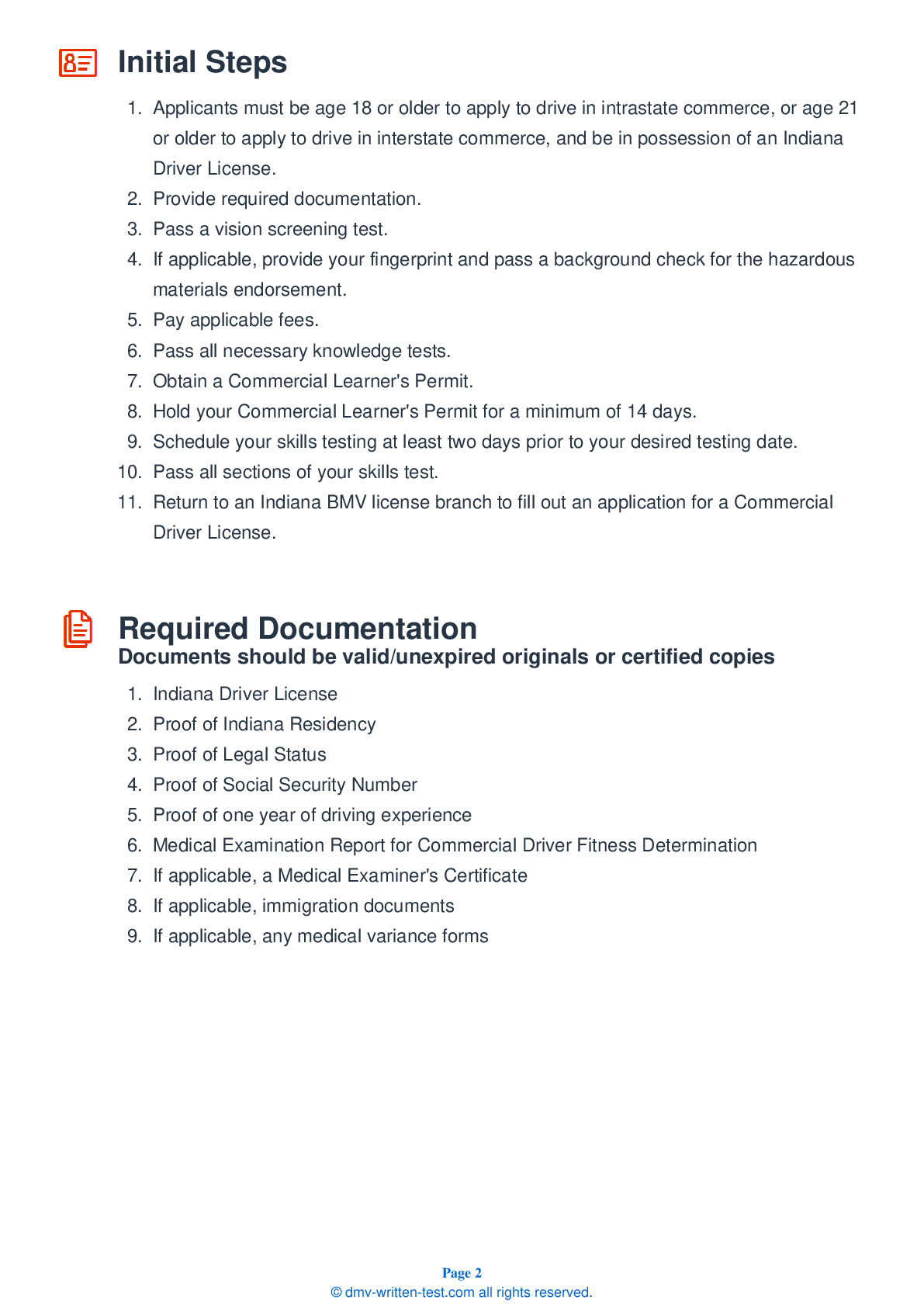Air Brakes
This endorsement is required for driving a vehicle with air brakes. To receive this endorsement, applicants must pass a written test. The test consists of 25 multiple choice questions. Each question has four answer choices. To pass, the applicant must answer at least 20 questions correctly. Test questions come from the Indiana Commercial Driver License Manual. Questions come from the chapter covering: Air Brakes. The Air Brakes endorsement may be used with the Class A, B or C CDL.
Number of Question
Passing Score
13. While driving, spring brakes are generally held in place by:
Explanation
While driving, spring brakes are generally held in place by air pressure. If the air pressure gets low enough, the springs will activate the brakes.
14. The parking brake should be:
Explanation
The parking brake should be applied every time you park your vehicle.
15. An Anti-Lock Braking System (ABS):
Explanation
Anti-Lock Braking Systems (ABS) are compatible with air braking systems. ABS helps maintain control of a vehicle and prevents the wheels from locking up during hard braking on slippery surfaces. ABS can still provide benefits even if is present on only one axle.
16. Water and compressor oil are usually found in the compressed air within an air brake system. Water and compressor oil:
Explanation
Compressed air in an air brake system usually contains a certain amount of water and compressor oil. The water and oil can damage the brakes if left to accumulate in the system. Manually operated air tank drains must be opened daily to remove this build-up.
17. During a static leakage test, the maximum leakage rate for a double combination vehicle is:
Explanation
When performing a static leakage test on a double combination vehicle with air brakes, the leakage rate should be no more than 3 psi in one minute. If air leaks from the air brake system at a quicker rate, the vehicle should not be driven because something likely needs to be repaired.
18. To ensure normal stopping power, drivers of vehicles equipped with a front brake limiting valve should:
Explanation




